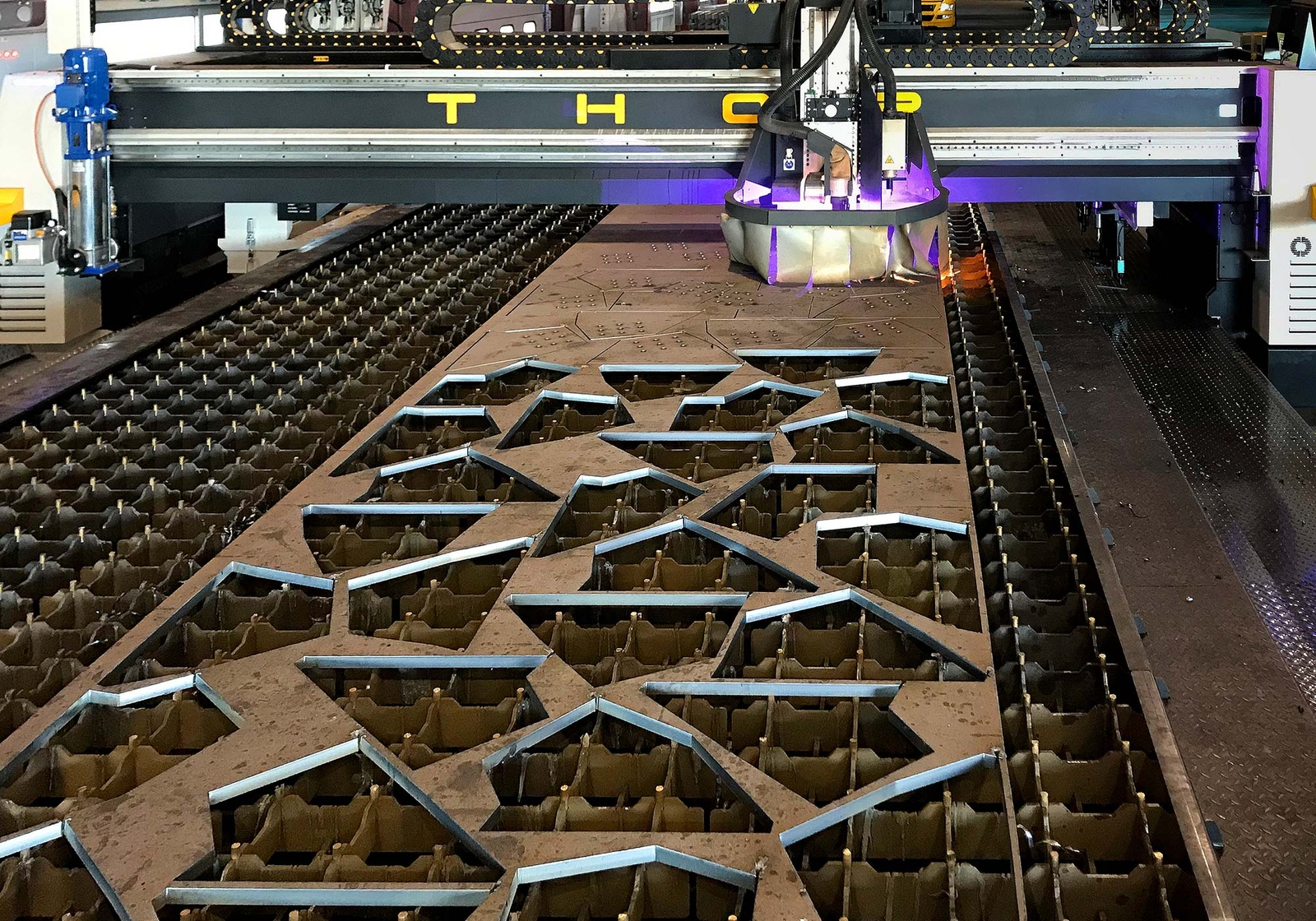Ingenious Patterns in Steel Construction: Enhancing Toughness and Precision
In the realm of steel fabrication, the pursuit of longevity and accuracy has actually brought about a wave of innovative patterns that are improving the market. From advancements in welding technologies to the combination of robotic automation in fabrication procedures, the landscape of steel manufacturing is evolving swiftly. High-strength alloy growth, combined with the utilization of 3D modeling and simulation software, is pushing the boundaries of what is achievable in regards to architectural honesty and accuracy. Furthermore, the expanding emphasis on lasting techniques in steel production is not just driving effectiveness however also fostering an extra environmentally mindful approach to construction. These patterns are not simply shaping today but likewise laying the foundation for the future of steel fabrication, promising additional improvements in durability and precision.
Advanced Welding Technologies
In the realm of steel manufacture, the adoption of sophisticated welding innovations has actually considerably reinvented the industry's strategy to achieving premium top quality and accuracy in structural welds. Advanced welding innovations, such as laser beam welding and friction stir welding, have actually arised as game-changers in the area. By leveraging these advanced welding methods, steel fabricators can raise the toughness, strength, and precision of their structural welds, fulfilling the increasingly demanding needs of contemporary building and construction projects.
Robotic Automation in Construction
Accepting robotic automation has come to be a foundation of modern-day steel manufacture techniques, enhancing and improving procedures performance across the industry. Robots are reinventing the means steel components are produced, using unrivaled precision and speed while minimizing human mistake. These automated systems can take care of recurring tasks with consistent accuracy, resulting in better final product.
One trick benefit of robot automation in steel manufacture is the ability to work around the clock without fatigue, significantly enhancing production output. This continuous operation reduces downtime and accelerates project timelines, ultimately saving costs for manufacturers. Additionally, robotics can be set to perform detailed jobs that might be difficult or harmful for human workers, improving safety and security in the office.
Additionally, robot automation enables smooth assimilation with other electronic modern technologies, such as computer-aided design (CAD) software program and Internet of Things (IoT) systems (metal fabrication melbourne). This interconnected method enhances communication in between various stages of construction, maximizing operations and guaranteeing real-time tracking and control. As the steel manufacture sector remains to develop, robot automation attracts attention as a transformative force driving efficiency and precision in producing procedures

High-Strength Alloy Growth
The advancement of high-strength alloy development in steel fabrication is reshaping the industry's approach to enhancing material resilience and performance. High-strength alloys are engineered to exhibit superior mechanical residential or commercial properties, such as enhanced tensile strength, toughness, and corrosion resistance contrasted to typical steel qualities. By including these sophisticated alloys into construction processes, manufacturers can generate parts that stand up to higher tension levels and rough settings, causing more trusted and sturdy final product.
One key advantage of high-strength alloy growth is the capability to lower product thickness without jeopardizing structural honesty. This not just results in lighter-weight parts however also adds to cost savings and enhanced effectiveness in manufacture and setting up procedures. Moreover, the enhanced strength-to-weight ratio of these alloys permits the style and building of frameworks with higher load-bearing capabilities while decreasing total weight.
3D Modeling and Simulation Software Program
Innovations in steel fabrication processes have actually been substantially pushed by the integration of advanced 3D modeling and simulation software application tools. These tools permit fabricators to produce in-depth online models of their jobs, allowing them to envision the final product with precision before any kind of physical job starts.

Lasting Practices in Steel Production
Including sustainable practices right into steel production processes is necessary for decreasing ecological impact and making certain long-term resource schedule. One essential lasting technique is the fostering of energy-efficient technologies to lower greenhouse gas discharges during the steel manufacturing procedure. This consists of using renewable power resources, such as solar or wind power, to power steel plants and carrying out energy-efficient equipment to enhance power usage.
One more critical aspect of lasting steel manufacturing is the accountable sourcing of resources. This entails guaranteeing that the iron ore and other sources made use of in steelmaking are obtained from honest and ecologically pleasant resources. By promoting transparency in the supply chain and adhering to stringent environmental requirements, steel suppliers can minimize the negative impacts of resource extraction on regional ecological communities and communities.

Verdict
In final thought, the ingenious trends in steel manufacture such as innovative welding innovations, robotic automation, high-strength alloy growth, 3D modeling and simulation software application, and sustainable practices are boosting the longevity and accuracy of steel products. These innovations are reinventing the steel fabrication sector other by enhancing efficiency, top quality, and sustainability. It is clear that the future of steel fabrication exists in embracing these sophisticated technologies to fulfill the demands of modern-day construction and production industries.
In the world of steel fabrication, the quest of durability and precision has actually led to a wave of innovative fads that are reshaping the market.In the realm of steel manufacture, the adoption of innovative welding modern technologies has dramatically transformed the market's strategy to achieving remarkable quality and accuracy in architectural welds. As the steel construction industry proceeds to advance, robotic automation stands out as a transformative force driving effectiveness and accuracy in manufacturing processes.
Moreover, reusing and recycling steel scrap and waste materials play a substantial duty in enhancing the sustainability of steel production. Alpha reo.In conclusion, the ingenious patterns in steel manufacture such as innovative welding technologies, robotic automation, high-strength alloy development, 3D modeling and simulation software, and sustainable methods are improving the toughness and accuracy of steel items